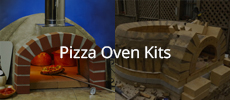Obviously there is some inconsistency in sample thickness which were also 12-15 mm thick. I used a piece of chalk shaved down to 13mm as a comparison.
Flexural Strength Tests
Chalk sample 1.7 Kg
Mix 1 sample at max test weight of 2.4 Kg It would not break
Mix 2 sample 0.71 Kg
Mix 5 sample 0.56 Kg
Mix 6 sample 0.48 Kg
I did not make finger samples for Mixes 3 and 4
Because the Homebrew Mix 1 sample didn't break I did it by hand and was only just able to snap it.
It was very strong. I have 2 left so it may be interesting to see what happens to samples 1 and 2 when taken to 500C and comparing their relative strengths.
Make of these results what you will.





Leave a comment: